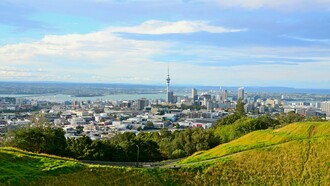As part of their month-long 10th anniversary series in remembrance of 9/11, The Guardian related economic and educational opportunity with the reasons for high numbers of Native Americans in the U.S. military. Following 9/11, Native Americans have continued to over-represent their populace in the military. They share this in common with people from small towns in the Midwest. The U.S. military depends on a Native American armed force twice as large as their proportion to the general population.
Book Cliffs, where industrial sites have emerged to extract bitumen that would supply U.S. demand for a mere three years, at the cost of a beloved ecosystem, and traditional hunting ground for the surrounding Native peoples. Black bears, frogs, and chipmunks rove there amid wildflowers and fungi, sandstone and scrub oak dotted with Douglas fir, as well as ponderosa and piñon pines.
For such stakeholders as Cameron Todd, and Governor Herbert, 1.25 trillion dollars is on the line, when figuring the entire reserve of 25 billion barrels of bitumen. (These numbers are based on Utah Geological Survey data, and a Bloomberg graphical chart comparing the Canadian dollar value of bitumen and refined products from October 2009 to July 2014.) “We, our shareholders, and the many stakeholders of Utah who stand to benefit from this environmentally-responsible and well-designed project, are very frustrated in the prolonged delays endured in this process,” wrote Cameron Todd to Governor Herbert, referring to the five-year regulatory approval process prior to 2012. “If successful in this first project, we expect our process to be applied broadly in other locations with an enormous net environmental benefit.”
Utah has the largest number of tar sands occurrences, and the largest individual deposits in the U.S., as verified by the Utah Geological Survey. The U.S. Oil Sands project is the very first commercial tar sands venture in the U.S. The earliest noted publication from the Utah Geological Survey, on this data, is from 1996.
The question must be asked, why weren’t such deposits mined previously? After all, tar sands mining began in Alberta in 1967, and the hot water extraction technology has been available since the 1920s. The high desert is an absolute boon to the natural heritage of America, even in a state where the landscape has been used to simulate life on Mars. Uintah County is fast becoming part of the environmental and legal heritage of the country as well. On July 21, twenty-one direct action protestors were incarcerated. Among them were legal observers, independent media, jail support, indigenous people, and trans individuals.
Take a minute to imagine, how far 20 gallons of gasoline will take a person today? In 2013, the EPA estimated that the average car maintained 23 mpg. At the very least, the U.S. Oil Sands project in Utah requires that 4,000 pounds of earth be dug up for every 20 gallons of gasoline, or based on the national mpg average, 460 miles. The U.S. Energy Information Administration confirms these numbers.
In order to drive from Asphalt Ridge, to Circle Cliffs, the longest stretch of land between two known outcrops of oil sand sites in the U.S. Oil Sands projects, a round trip is over 500 miles. Meanwhile direct actions ensue with increasing efficacy, involving grassroots alliances as diverse as chipmunk-masked blockaders, the Trans & Women Action Camp (TWAC), and Women in Action Against Violent Extraction (WAAVE).
One of the main arguments, led by Living Waters is over water pollution. Ironically, from the outset, the U.S. Oil Sands, together with Utah water regulators, and an administrative law judge in Salt Lake City named Sandra Allen, have deemed the industrial sites as having so little water that no water pollution permit was needed.
Utah is the second driest state in the country. Many question whether local aquifers can sustain the production mark of 168,000 gallons of water for every 84,000 gallons of bitumen. In 93 acres of strip mining, the U.S. Oil Sands permit required 116 gallons of water per minute. The U.S. Oil Sands purports a 95% water-recycling rate; yet say nothing specifically about the hawks, and antelopes that that depend on fresh water, and wild Indian rice grass throughout the plateau.
“It is estimated that U.S. Oil Sands surface footprint will be 90-95% smaller than other projects (on a per barrel basis) and a smaller footprint means less impact on wildlife and the local ecology,” states the official U.S. Oil Sands website. Extractive processes that mine as deep as 150 feet using mechanical shovels able to lift two tons of earth at a time hardly afford believable reclamation prospects.
With a Ground Water Discharge Permit granted by the Utah Division of Water Quality, the official U.S. Oil Sands rhetoric also boldly mentions how the depth of aquifers wherefrom the water for these projects are sourced is “below the recharge sediments of any local streams or rivers.” Conversely, a report from the Department of Geology and Geophysics at the University of Utah titled Hydrochemical Data from Perennial Springs in the PR Spring Area of the Southern Uintah Basin states differently. The highly technical study, which breaks down stereotypes of regional aridity, identifies the Book Cliffs in the East Tavaputs Plateau on the southeastern rim of the Uintah Basin as verdant, with “Apsen trees and grassy meadows.”
The results and discussion sections of the mining/processing/disposal impact analyses, by the six researchers, reads: “…The absence of measureable DRO [diesel range organics] and GRO [gas range organics] concentrations in spring and well water does NOT indicate a lack of contact of these waters with tar sand during infiltration… the potential impact of tar sand development on spring water quality and flow should be evaluated as ranching families rely on springs in Main Canyon for their livelihood.”
In other words, what this study points out is that there is no evidence to conclude that, in fact, the tar sands industry is not negatively impacting the precious, local water resources. The official statistics of environmental impact, as conveyed by U.S. Oil Sands, are abhorrently misleading. All of the statistical, and regulatory officialdoms, however, are constantly called into question, and with increasingly widespread relevancy.
The Endangered Species Act could render the oil and gas industry impotent in light of the need to protect the Colorado River habitat of the gunnison sage-grouse. An effective measure will likely not be in place until after September 30, 2015 when the Fish and Wildlife Service is set to decide on protection measures. Eerily enough, this is also when U.S. Oil Sands is projected to begin turning profits from their latest exploits.
Truly, endangering life on Earth is a crucial point of reflection. The capitalist-centric model of development as dependent on fossil fuels is, in practice, antithetical to a viable human ecosystem on the planet. On September 21st, when over 400,000 marched for climate justice, Code Pink stood among them under the banner: War Is Not Green. Climate change is, finally, the last signpost.















